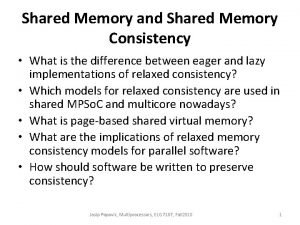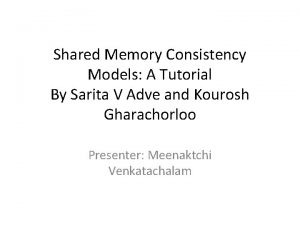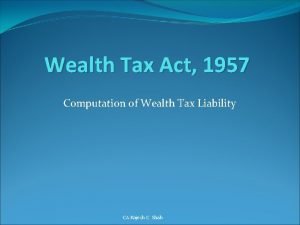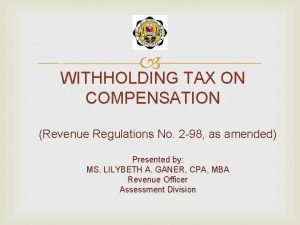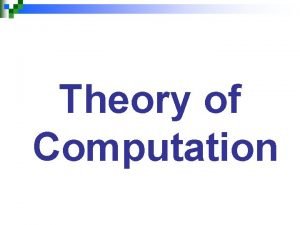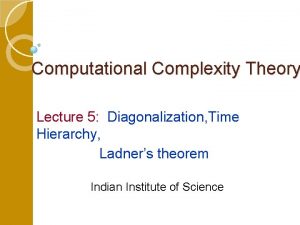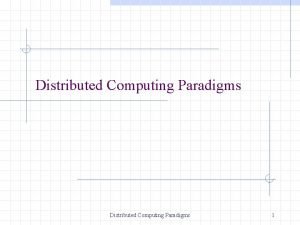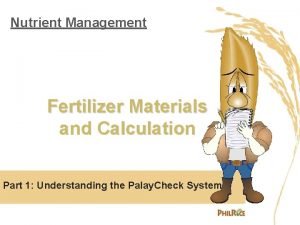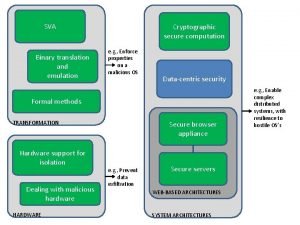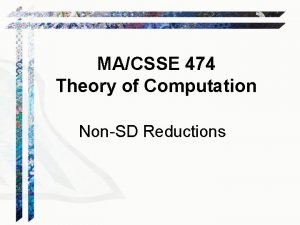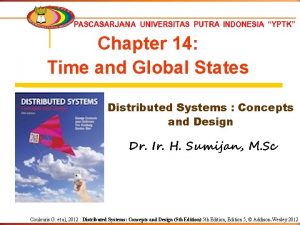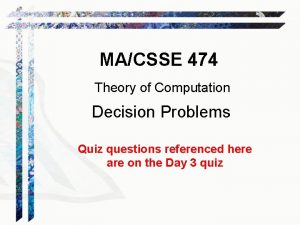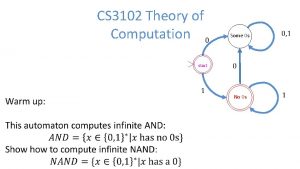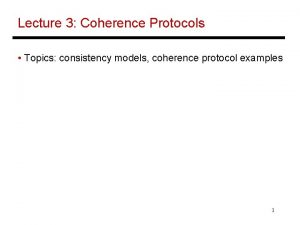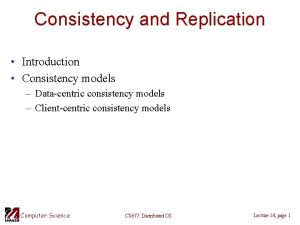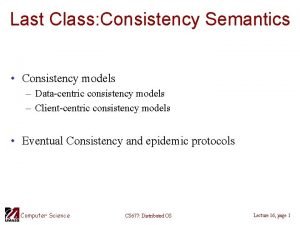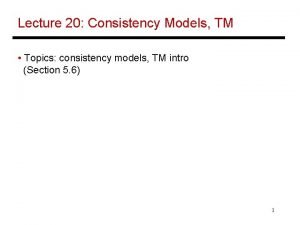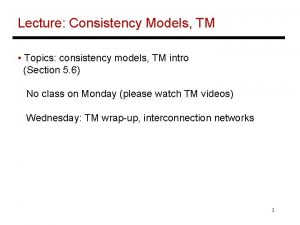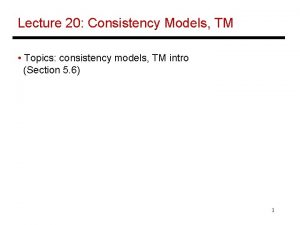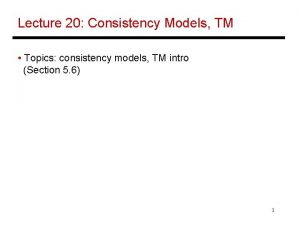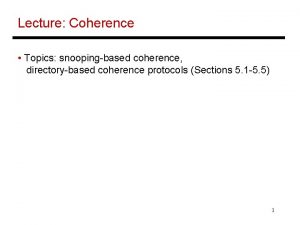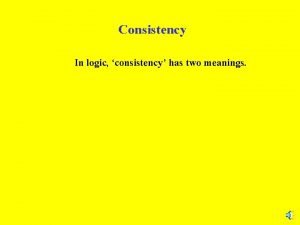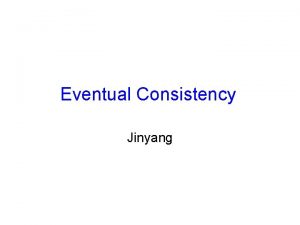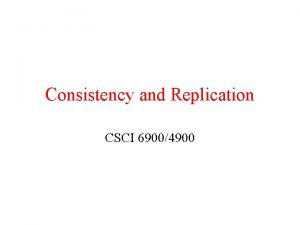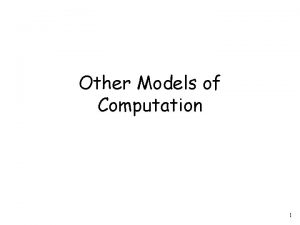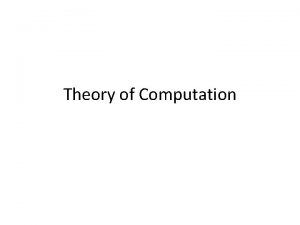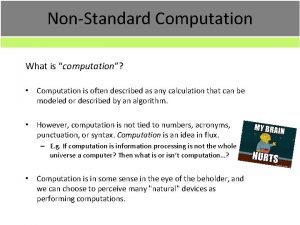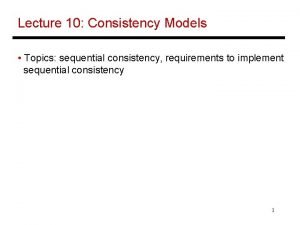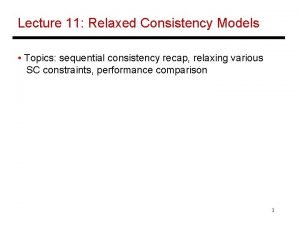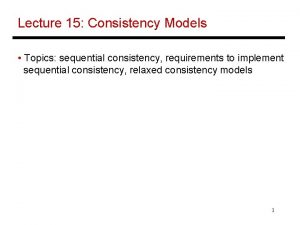Consistency Models of computation Coherence vs consistency coherence























- Slides: 23

Consistency Models of computation

Coherence vs. consistency • coherence deals with accesses to the same memory location • consistency addresses the possible outcomes from legal orderings to all memory locations • common model (sequential consistency) is easy to understand but is difficult to implement, and has poor performance

What do you expect? • Sequential consistency: “Commit results in processor order” • simple enough in a uniprocessor • similarly with context switching: just save and restore state • what about multi-threading, or multiprocessor machines?

MIPS R 10000 • issue instructions out of order • in-order commit • speculative loads may execute and pass a value for modification long before the load commits in program order • meantime, some other processor may commit a store to that location

Producer - consumer P 1 write (A) ; flag : = 1 ; P 2 while(flag != 1) ; read (A); • assumes P 1’s writes become visible to P 2 in program order

One or both proceed P 1 X : = 0 ; . . . if (Y == 0) kill P 2; P 2 Y : = 0 ; . . . if (X == 0) kill p 1 ; • it’s a race through the critical section

Sequential consistency • results can be mapped to some sequential execution where the instructions of each process appear in that program order equivalently: • memory operations proceed in program order • all writes are atomic and become visible to all processors at the same time

The need to relax • strict sequential consistency has severe performance drawbacks, so: a) keep sequential consistency, and use prefetch and speculation, or b) relax the consistency model – and be prepared to think carefully about programs

Attributes of consistency models • system specification – which orders are preserved, and which are not? is there system support to enforce a particular order? • programmer interface: the set of rules that will lead to the expected execution • translation mechanism: how to translate program annotations to hardware actions

Alternative 1 • total store ordering: allows a read to bypass an earlier incomplete write • helps hide write latency • can be provided by fence instructions • SPARC v 9 provides various memory barrier instructions

Alternative 2 • partial store ordering: allow writes as well as reads to bypass writes • writes cannot bypass reads • writes are still atomic • very different from sequential consistency – e. g. spinning on a flag doesn’t work • needs a store barrier instruction to emulate sequential consistency

Alternative 3 • processor consistency: same as total store ordering, but does not guarantee atomic writes • implemented in recent Intel processors

Weak ordering • just try to preserve data and control dependencies within a process • don’t worry about the order of memory operations between synchronization points • e. g. don’t worry about the exact order of independent reads and writes within a critical section

Weak ordering • code from outside (before or after) a critical section cannot be reordered with code inside it • code before a barrier must commit before entering, code after a barrier must not issue until the barrier is left • code before a flag wait must commit before waiting, and code after must not issue before flag is set by the producer • code before setting of a flag must commit first, and code after must not issue before the flag is set

Weak ordering • a good match to modern CPUs and aggressive compiler optimizations • hardware must recognize synchronization, or compiler must insert proper barriers • MIPR R 10000 provides sync instruction and fence count register • sync disables issue until fence register is zero and all outstanding memory operations have committed • fence count incremented on an L 2 miss and decremented on a reply

Release consistency • relax weak ordering further • categorize all synchronization operations as either acquire or release • acquire is a read (load) on a protected variable, like a lock or a waiting on a flag • release is a write (store) granting access to others, like unlock or setting a flag • barrier is release (arrival) and acquire (departure)

In practice • MIPS processors are sequentially consistent • Sun supports total or partial store ordering • Intel supports processor consistency • Alpha and Power. PC support weak ordering; Power 4 and Power 5 do not guarantee atomic writes

Processor consistency • a simple model with good performance • writes must become visible to all processors in program order • loads can bypass writes

Back to our examples Under these rules, • does producer-consumer work? • does one-or-both work?

Results under processor consistency • producer-consumer is okay because P 1’s actions are both writes and they must become visible sequentially • one-or-both can break because loads can bypass writes – if (X == 0) is a load – Y = 0 is a write

Intel Itanium • • loads are not reordered with other loads stores are not reordered with other stores are not reordered with older loads stores to the same location have a total order • a load may be reordered with an older store to a different location

Itanium example 1 • initially, x=y=0 P 1 R 1 <- x y <- 1 P 2 R 2 <- y x <- 1 (loads) (stores) • we will never see R 1 = R 2 = 1 because stores are not reordered with older loads

Itanium example 2 • initially, x=y=0 P 1 x <- 1 R 1 <- y P 2 y <- 1 R 2 <- x (stores) (loads) • we may see R 1 = R 2 = 0 because loads may be reordered with older stores
 Bitcoin
Bitcoin Memory consistency models in distributed systems
Memory consistency models in distributed systems Fifo consistency
Fifo consistency Shared memory consistency models: a tutorial
Shared memory consistency models: a tutorial Monotonic read consistency
Monotonic read consistency What is the difference between modals and semi modals
What is the difference between modals and semi modals Computation of wealth tax
Computation of wealth tax Tax due formula
Tax due formula Tzu chieh wei
Tzu chieh wei Drug computation
Drug computation Dfa to nfa
Dfa to nfa Diagonalization method in theory of computation
Diagonalization method in theory of computation Computation examples
Computation examples Different computing paradigms
Different computing paradigms The pagerank citation ranking: bringing order to the web
The pagerank citation ranking: bringing order to the web Fertilizer computation philrice
Fertilizer computation philrice Binary search in secure computation
Binary search in secure computation Computation history
Computation history Cuts of a distributed computation
Cuts of a distributed computation Crystalloid solution example
Crystalloid solution example Theory of computation quiz
Theory of computation quiz Privacy-enhancing computation
Privacy-enhancing computation Dqage
Dqage Cs 3102
Cs 3102

